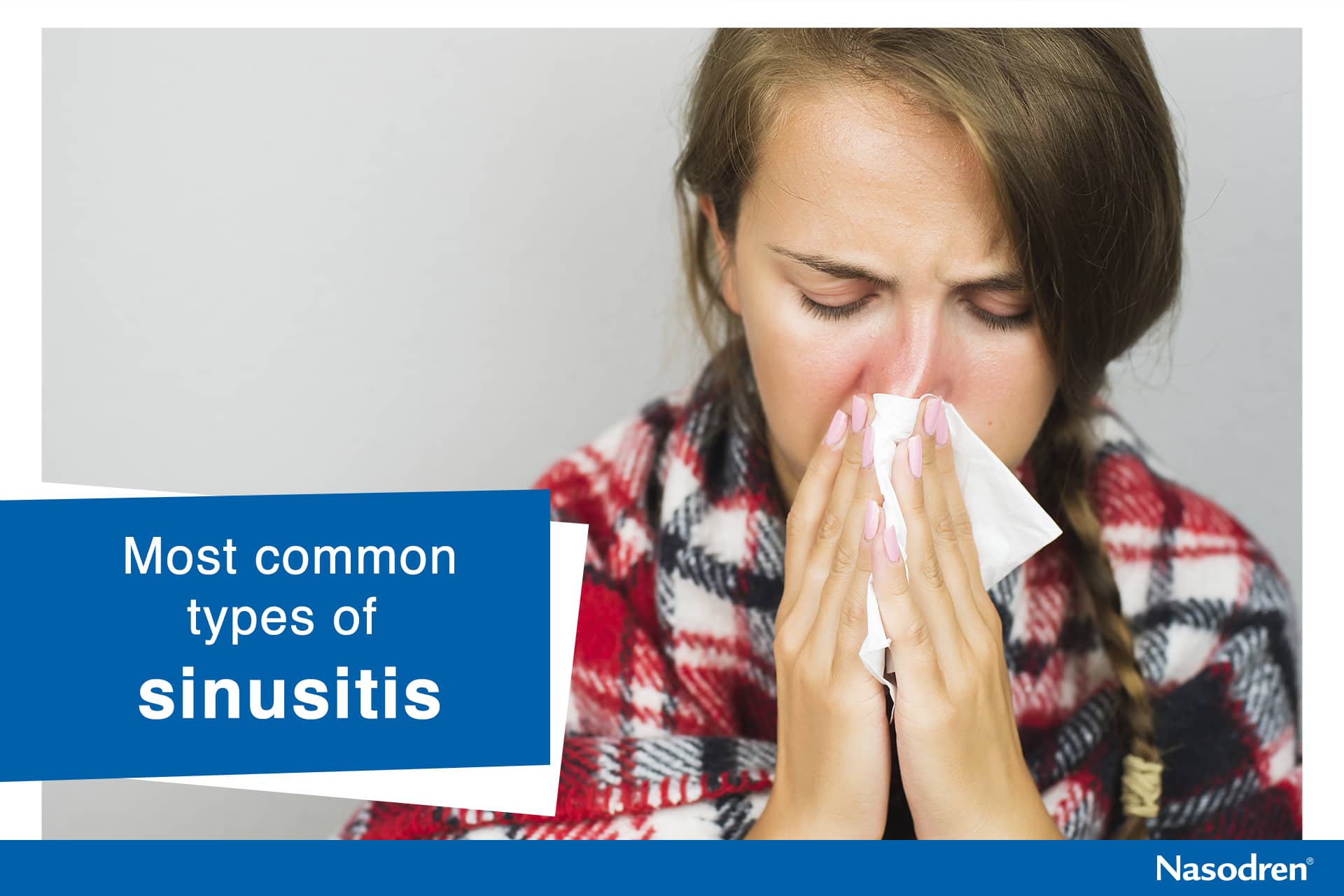Sinusitis is defined as the inflammation of the nose and paranasal sinuses characterized by two or more symptoms, one of which should be either nasal obstruction/congestion or runny nose/post-nasal drip (i.e, mucus in the back of the throat). It usually also presents with facial pain or pressure, and a reduction/loss of the sense of smell, or both.
According to the duration of the symptoms is classified as:
Acute sinusitis (AS)
European Guidelines recognize acute viral, acute post-viral, and acute bacterial sinusitis.
- Common cold: Acute viral sinusitis with a duration of symptoms less than 10 days.
- Acute post-viral: Increase in symptoms after 5 days or persistent symptoms for more than 10 days with less than 12 weeks duration.
- Acute bacterial: is suggested by the presence of:
- – Discoloured mucus
- – Severe local pain
- – Fever > 38 °C
- – ‘Double’ illness (i.e., deterioration after an initial, milder phase of illness)
Only between 0.5-2% of AS become acute bacterial sinusitis requiring antibiotics.
It was noted that in many cases of acute bacterial sinusitis, the disease is unilateral.
Acute recurrent sinusitis (ARS)
ARS can occur once or more than once in a defined time period. This is usually expressed as episodes/year (4 or more episodes a year), but with complete resolution of symptoms between episodes.
Each episode must meet the criteria for acute post-viral (or bacterial) sinusitis.
Chronic sinusitis (CS)
It is defined as sinusitis with the symptoms lasting more than 12 weeks.
Exacerbation of chronic sinusitis
It is the aggravation of chronic sinusitis with more intense and annoying symptoms. It is estimated that chronic sinusitis patients suffer, on average, 2.5 episodes of exacerbation a year.
Guidelines also classify CS in two:
– CS with nasal polyps, and
– CS without nasal polyps
Chronic sinusitis without nasal polyps is more prevalent than CS with nasal polyps.
Nasal polyps are benign lesions that grow from the lining of the nose or sinuses.
The etiology (cause) of nasal polyps remains unclear, but is associated with some conditions such as allergy, asthma, infection, cystic fibrosis, and aspirin sensitivity.
When polyps are large and do not respond to medical treatment surgery is required but, unfortunately, recurrence of the polyps is common, with severe disease recurring in up to ten percent of patients.
Regardless of the duration, the symptoms of sinus infection are the same and are caused by the accumulation of mucus inside the sinuses, relief therefore is obtained by draining this mucus and cleansing the nose and the paranasal sinuses.
Nasodren is 100% natural, with no rebound efect
Effectively reduces nasal congestion
Buy now HERE









